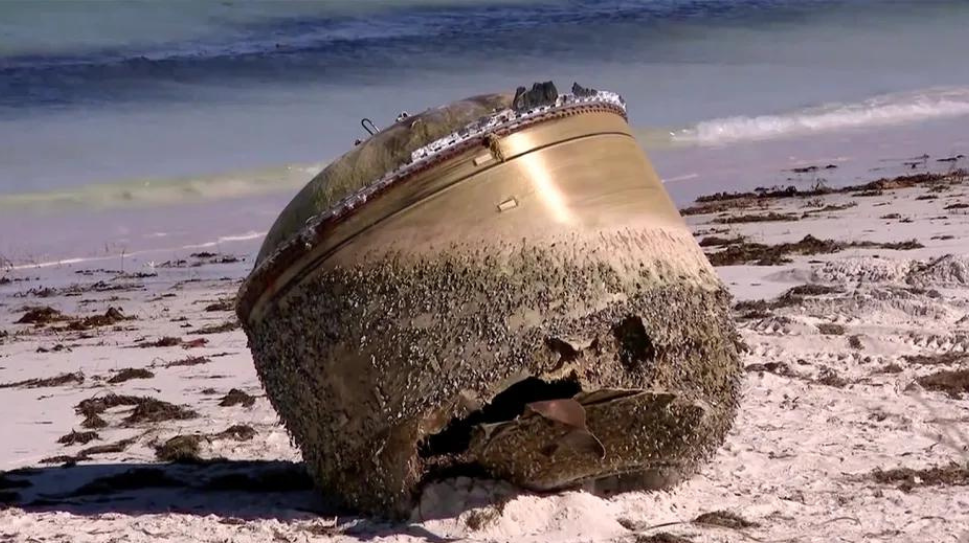
Mysterious Cylinder on Australian Beach Identified as Indian Space Debris
A mysterious cylinder that recently washed ashore in Western Australia has been identified as debris from an Indian space launch. This revelation, confirmed by authorities in both countries, has put an end to widespread speculation about the object’s origin.
The Origin of the Cylinder
The cylinder was part of a Polar Satellite Launch Vehicle that the Indian Space Research Organization (ISRO) had previously launched. This information was shared by Sudheer Kumar, a director at ISRO. The Australian Space Agency also confirmed this conclusion after conducting its investigation.
The Discovery and Public Reaction
The copper-colored cylinder was discovered in July on a beach at Green Head, a coastal town north of Perth. The unidentified object attracted local residents and sparked numerous theories online about its possible origins. However, space junk was the most likely explanation, according to the police.
The Cylinder’s Current Status
The Australian Space Agency has advised the public to report any further suspected debris to local authorities. The Polar Satellite Launch Vehicle debris is currently in storage, and the Australian Space Agency is collaborating with ISRO to determine the next steps, including obligations under the United Nations space treaties.
Physical Characteristics of the Cylinder
The cylinder, taller than a human and covered with barnacles, appears to have spent a significant amount of time at sea before washing up. It is damaged at one end, indicating it may have had a rough journey. ISRO has confirmed that there are currently no plans to retrieve the object and bring it back to India.
In a nutshell, the discovery of the mysterious cylinder on an Australian beach highlights the issue of space debris and its potential impact on Earth. While the object did not pose any immediate danger, it serves as a reminder of the importance of managing and mitigating space debris. As we continue to explore and utilize space, ensuring the safety and sustainability of our activities remains a crucial concern.


